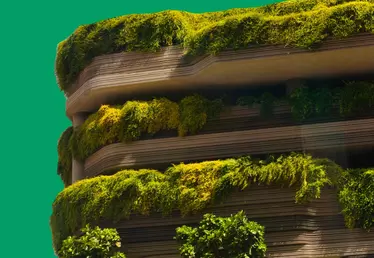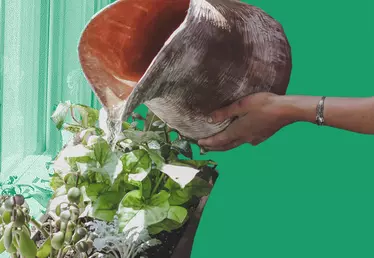

Hero banner custom title
Is your green city actually biodiverse?
2 min
City dwellers appreciate urban plants and get a well-being boost from having them around. Yet much remains to be known about the kind of plant life that thrives in concrete urban environments – including any similarities to its rural counterpart. Above all, the big question is whether toxic, invasive, allergenic and/or non-native plants actually benefit biodiversity.
Native and exotic species populating an urban habitat
One common trait of cities all around the world is a spatial organization that reflects residents’ needs and activities. Urban areas are marked by their greater or lesser density and by the preponderance of buildings – one corollary of which is land artificialisation and therefore a limited amount of space capable of sustaining biodiversity. Such areas tend to be developed either opportunistically (i.e. in the gaps between concrete structures and/or on brownfield sites) or else strategically (i.e. in parks, squares and/or botanical gardens). Although cities appear at first glance to constrain biodiversity, the reality is that they feature singular ecological characteristics that are highly conducive to certain plant species, whether these are native genuses or not.
Examples include white orpins, which often bedeck rooftops in Europe, or else agapanthus, a native South African species that flourishes in people’s gardens but also helps to attract myriad pollinators.
The truth is that many different plant varieties are likely to grow and prosper in an urban environment, regardless of whether they arrived there fortuitously or as a result of local greening policies (and indeed city dwellers’ aesthetic attempts to beautify their balconies). Unfortunately, there is no guarantee that different species will coexist harmoniously. According to Lincoln Garland, Associate Director at Biodiversity by Design (an environmental consultancy working out of the UK), an initial distinction should be made between native and non-native species.
"A species is considered native to a given region or ecosystem if it is only present because of natural processes, i.e. if there has been no human intervention". A non-native species, on the other hand, is one “that has been introduced by humans, accidentally or deliberately, outside its natural range".
Having said that, non-native species can adapt better than their native counterparts to the kinds of disturbances that human activities cause (air pollution, greenhouse gases, global warming, etc.). The former will then compete with the latter, potentially culminating in a modification and even impoverishment of local biodiversity.
Things aren’t always black or white with green plants
According to the International Union for Conservation of Nature (IUCN), one of the main threats to global biodiversity is the proliferation everywhere of invasive alien species, largely driven within cities worldwide by the creation of botanical gardens and, since the 19th century, the intensification of transport networks. The problem is that some of the species that have been introduced in this way are toxic in nature. One case in point is garlic, which originally came from China but has quickly colonized the entire Western world. Garlic roots spread toxins and their rapid growth hinders local biodiversity. Otherwise, there is the example of argemone, an originally Mexican plant that is toxic to humans and animals alike and now runs amok in Bhubaneswar (India).
There are also issues with invasive but non-toxic species that can be very difficult to regulate. One example here is Japanese knotweed, a plant that blankets the ground and by so doing suffocates other plants. Of course, such species also offer certain advantages: knotweed absorbs heavy metals found in the soil; and garlic is highly resistant to global warming. Such nuances must be accounted for when analyzing the role that nature plays in a given urban setting.
Creating balanced ecosystems within cities
Many different strategies are followed when addressing the challenge of species regulation combined with the need to create balanced ecosystems. The United States, for instance, has California’s Invasive Species Council of California, a committee established in 2009 for the purpose of mitigating invasive species’ ecological, economic and cultural impacts via preventative actions and improved coordination between public bodies and citizens.
Internationally, other initiatives and expert networks (like the Global Invasive Species Programme) are also being deployed to raise public awareness of biodiversity issues and invasive species management.
In a similar vein, there is also the common biodiversity protection strategy that EU members have now adopted.
Such efforts are notably manifested in many cities’ detailed management of their green spaces, generally aimed at reconstituting ecosystems that benefit all living organisms. As explained by French landscape architect Laure Planchais, the right approach "is not necessarily to plant trees everywhere as people sometimes advocate, but actually to plant the right plants in the right places. It is the plants chosen for a given location that will determine which species are attracted there, hence which food chain processes are going to be triggered”. If the quest for harmony is to become permanent, these are the kinds of dynamics that will need to be encouraged.
Share it:












